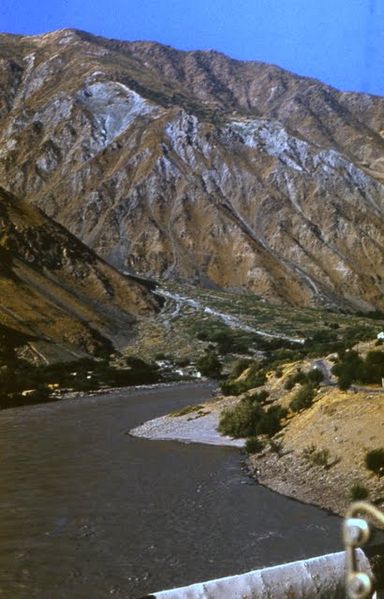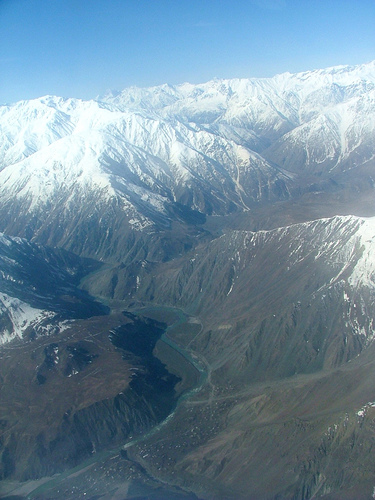Panj River
The Panj River, also known as Pyandzh River or Pyanj River, is a tributary of the Amu Darya. The river is 1,125 km long and forms a considerable part of the Afghanistan - Tajikistan border.
The river is formed by the confluence of the Pamir River and the Wakhan River near the village of Qila-e Panja. From there, it flows westwards, forming the border of Afghanistan and Tajikistan. After passing the city of Khorog, capital of the Gorno-Badakhshan Autonomous Region of Tajikistan it receives water from one of its main tributaries, the Bartang River. It then turns towards the southwest, before joining the river Vakhsh and forming the greatest river of Central Asia, the Amudarya.
A water treaty between the Soviet Union and Afghanistan, signed in 1946, allows Afghanistan to draw 9 million cubic metres of water a year. It currently draws 2 million cubic metres of water. According to the Pyanj River Basin Project environmental damage could be expected if Afghanistan drew the entire amount of water from the river that the treaty allows.


Source: Wikipedia